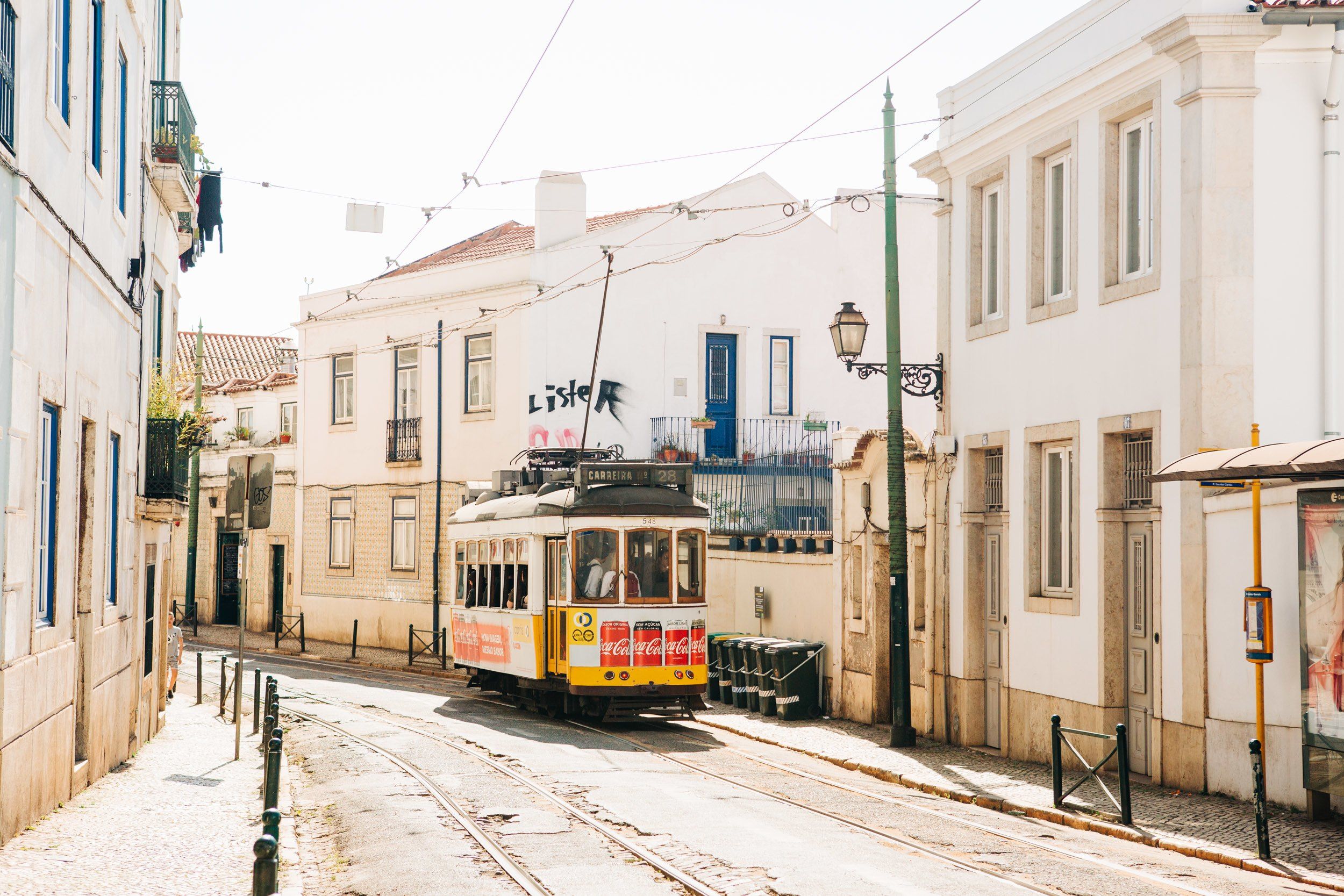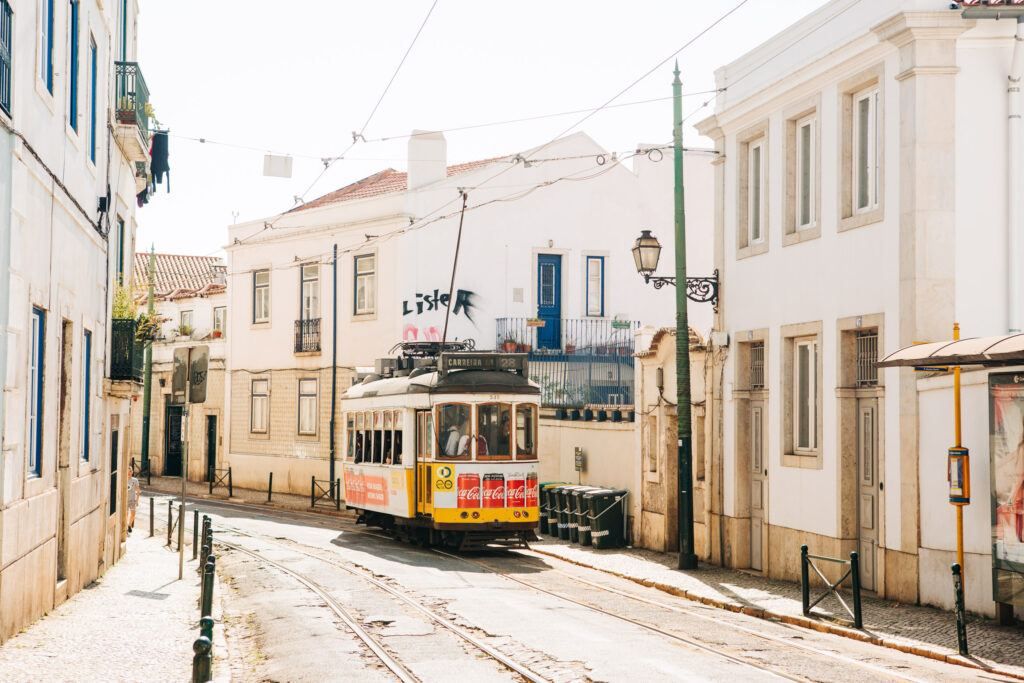When someone mentions Portugal, a few things come to mind: Lisbon, Porto, the famous port wine, and of course, fresh catch of the day – seafood. But Portugal is so much more than just what we see in popular travel magazines. From cities to small towns, from castles to farms, the sea to the hillside, Portugal is a treasure chest of places to see, things to do and, of course, photographs.
For this guide, I have broken down what to photograph in Portugal into three different categories.
- Cities and city life
- Castles, churches, and small towns
- Sea and surf
Ideally, the best way to explore Portugal, or any country for that matter, is to rent a vehicle and drive around at your own pace. I truly feel that setting your own pace and being the master of your time makes for the best travel adventure and you come back with photographs of things you enjoy doing. Of course, not everyone has the luxury of time. So, if you are pressed for time and only have a few days to explore Portugal, stick to the cities and the coastal towns. You will still get a glimpse of everything Portugal has to offer.
Recommended Reading: Want to learn how to make your photos stand out from everyone else’s? Grab a copy of Photzy’s Effective Storytelling premium guide.
City and City Life – Lisbon
Arguably the most popular city in Portugal, Lisbon has much to offer for the average tourist. From eclectic neighborhoods to vibrant eateries and castles and museums, you can easily spend several days exploring Lisbon.
From cities to small towns, from castles to farms, the sea to the hillside, Portugal is a treasure chest of places to see, things to do and, of course, photographs.
Your best bet is to buy a pass for the tramway that runs through many of Lisbon’s neighborhoods and walk everywhere else. This gives you access to photograph some of Portugal’s famous glazed ceramic tiles called azulejos. These tiles adorn many homes and buildings, and there is even a Museum of Tiles in Lisbon that showcases more details around the history of azulejos and how they came to be such a beautiful representation of Portugal and Portuguese culture.
Key Lesson: In Lisbon, buy a pass for the tramway that runs through many of Lisbon’s neighborhoods and walk everywhere else.
Here are a few must-see and must-photograph places in and around Lisbon:
Belem Tower
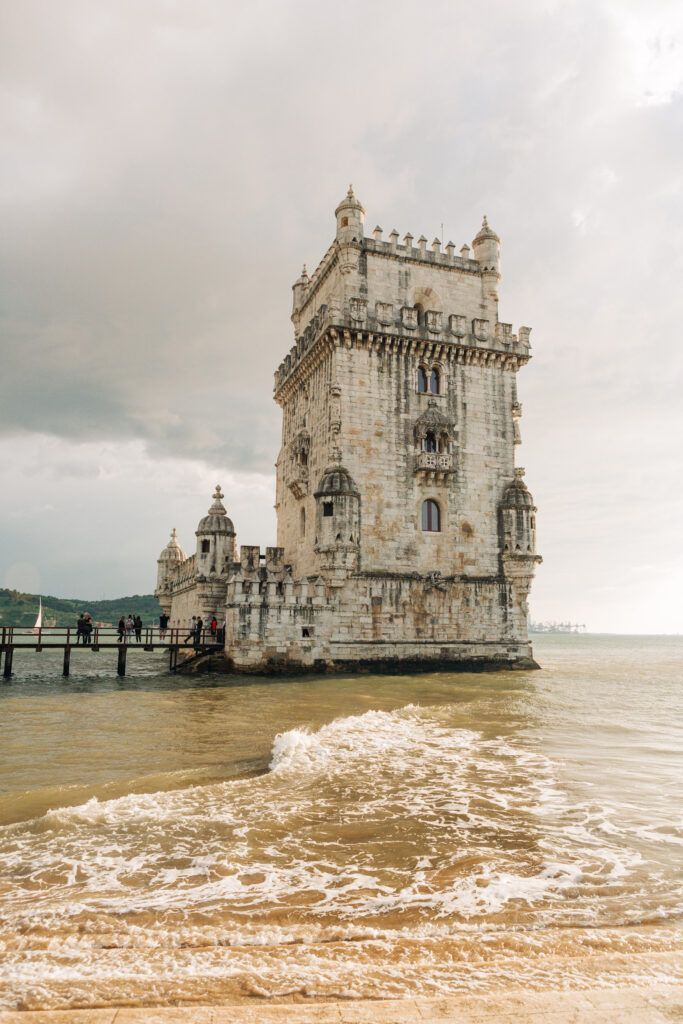
Photograph by Karthika Gupta
Visit the Alfama Neighborhood for Sweeping Views of Lisbon
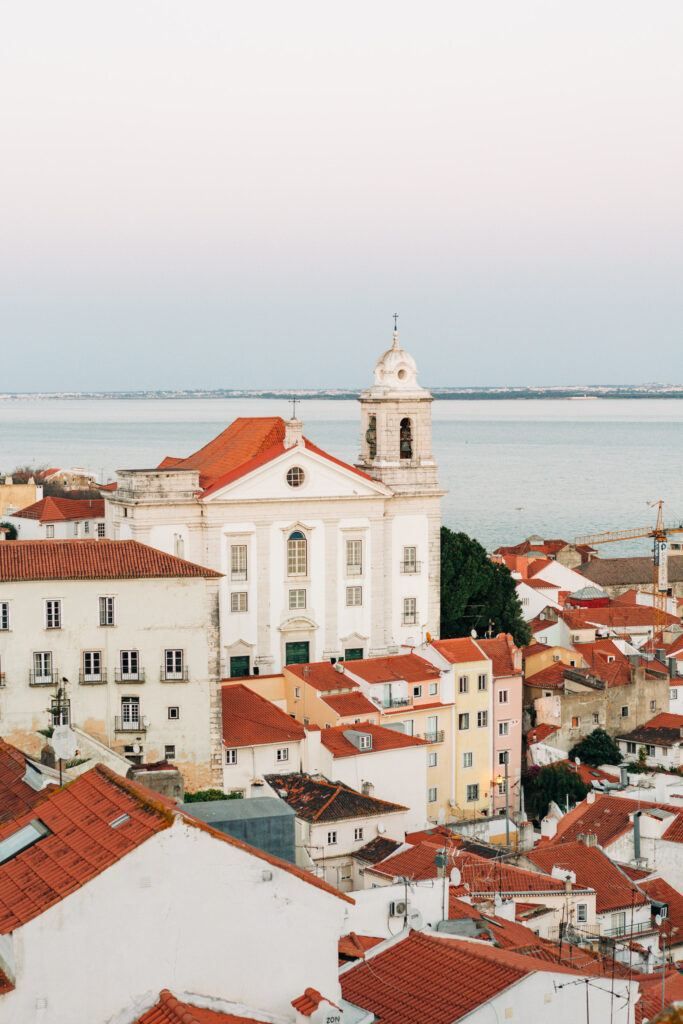
Sweeping view of Lisbon from the Alfama neighborhood. Photograph by Karthika Gupta
The National Tile Museum
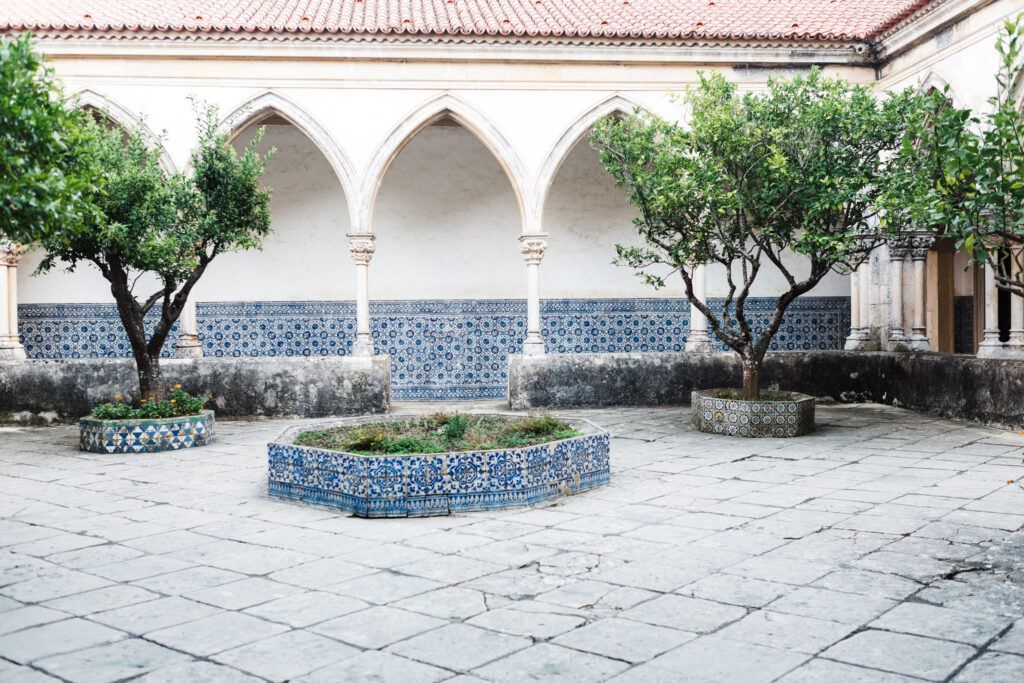
Photograph by Karthika Gupta
The Monument of the Discoveries
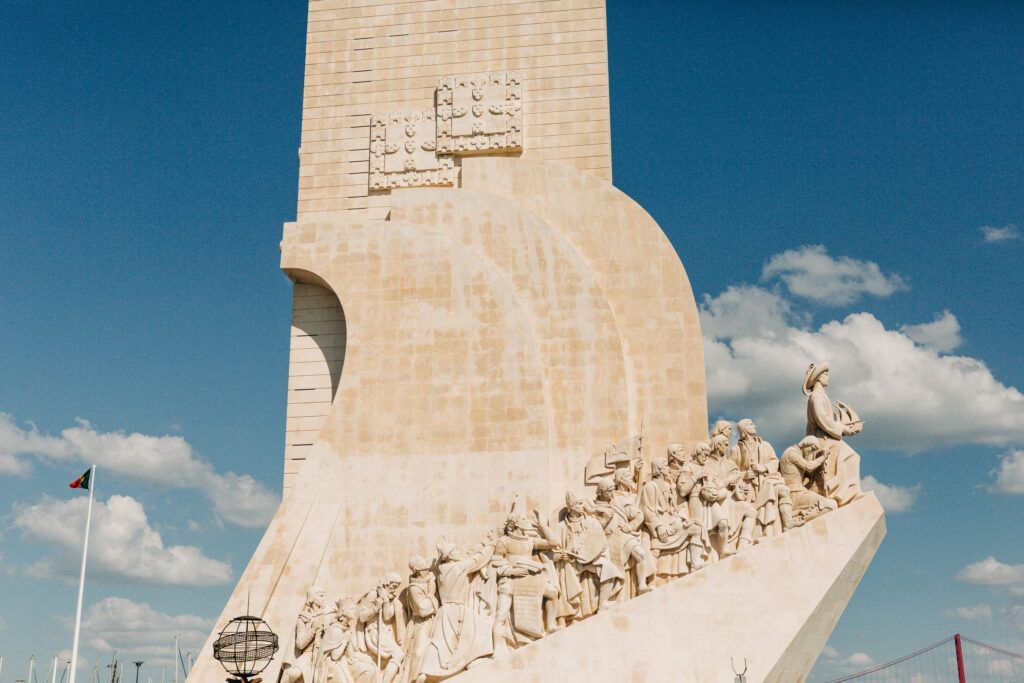
Photograph by Karthika Gupta
The Monastery of St. Jerome
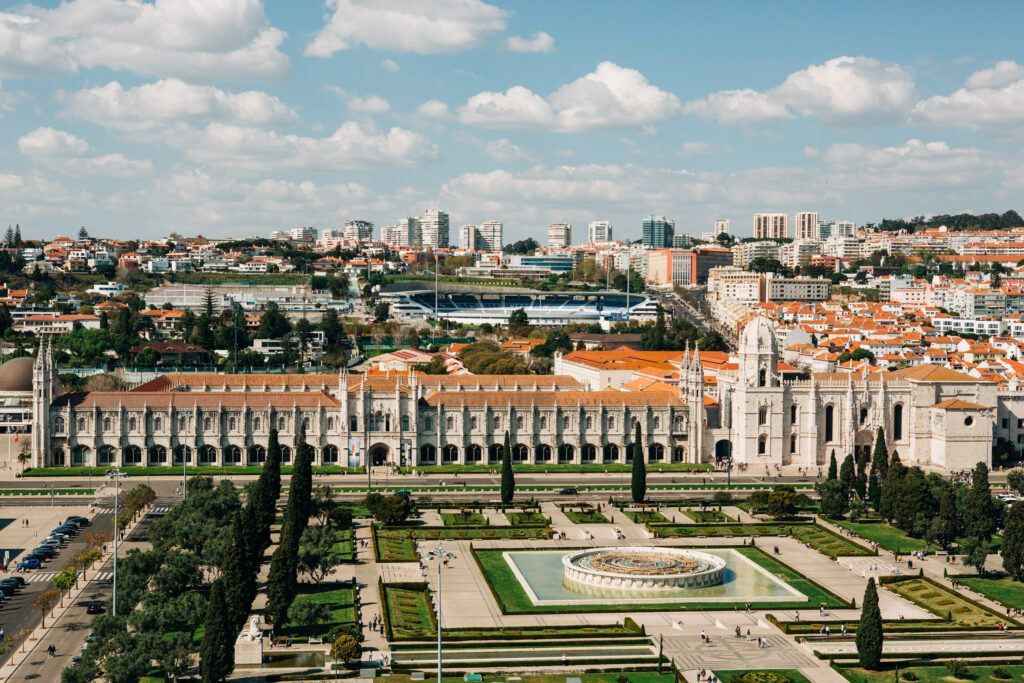
Photograph by Karthika Gupta
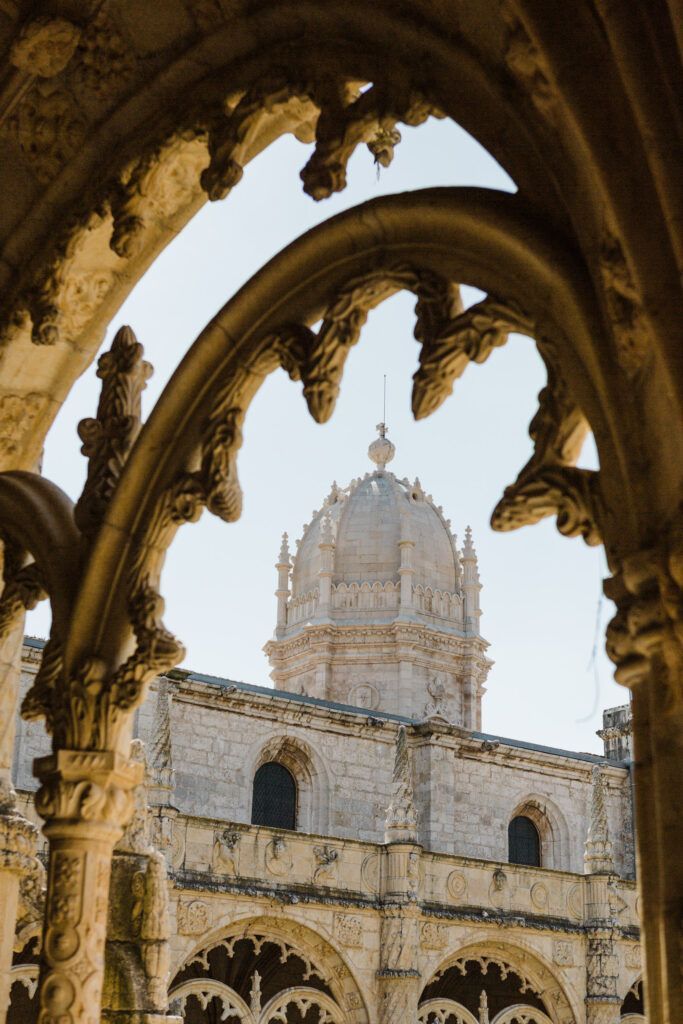
Photograph by Karthika Gupta
Key Lesson: Head up to the top of the Monument of Discoveries to get sweeping views of Lisbon, as well as the St. Jerome Monastery.
If you have time, you can even do a quick day trip to Sintra, which has one of the prettiest and most colorful castles in all of Portugal, The National Palace of Pena.
Castles, Churches, and Small Towns
As one of the oldest countries in Europe, Portugal is a retrophilia’s dream destination with so many beautiful and historic castles scattered all over the country. With over 150 castles and forts, many with some unique architectural elements, there is plenty to see and explore.
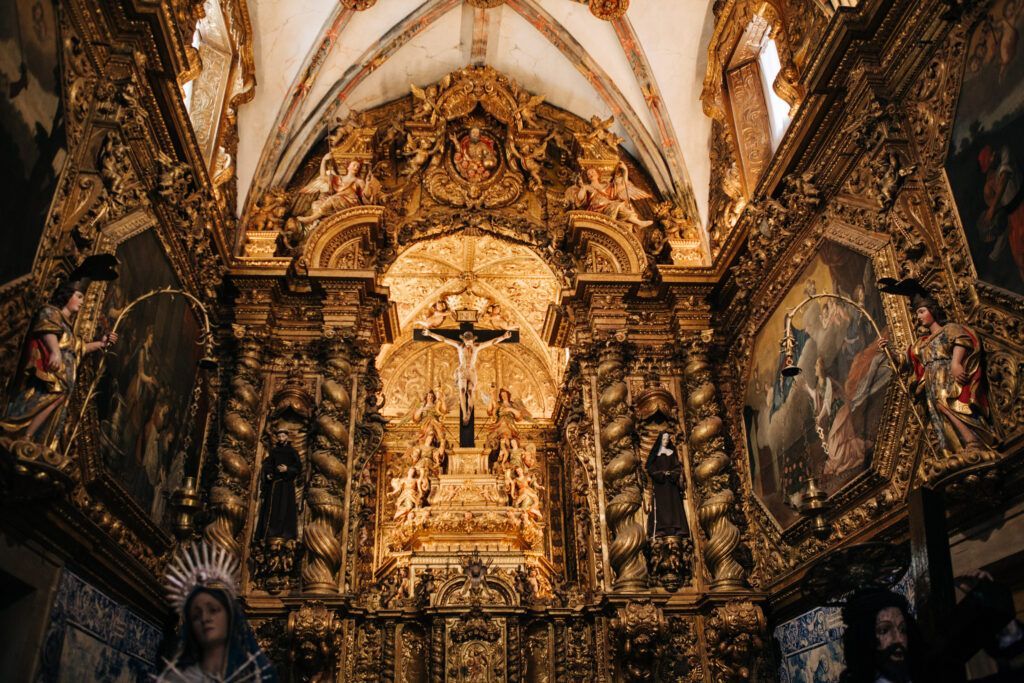
Photograph by Karthika Gupta
Key Lesson: Many of these castles are in small towns all over the country. Your best bet is to drive around for a few days and spend time in these small towns to explore and photograph these castles.
Recommended Reading: Want to learn how to make your photos stand out from everyone else’s? Grab a copy of Photzy’s Effective Storytelling premium guide.
Castle do Almourol
Castelo do Almourol is one of Portugal’s most spectacular castles. It is located on a small island in the River Tagus, so you have to take a short boat ride to get to the castle.
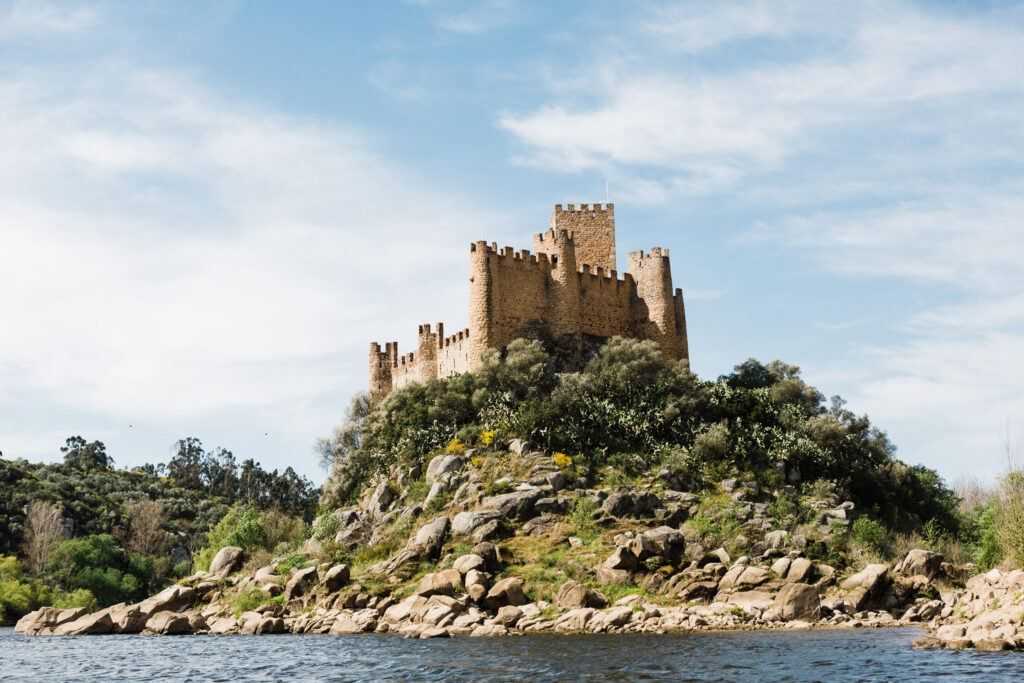
Castelo do Almourol is one of Portugal’s most spectacular castles. Photograph by Karthika Gupta
When the original castle was retaken in the 12th century, it was remodeled by Gualdim Pais, the leader of the Knights Templar in Portugal, who also built the equally spectacular Convento de Cristo in Tomar.
Convento de Cristo
The Convento de Cristo in Tomar is part church, part castle, and part monastery. It is one of the most beautiful churches that I have ever seen.
It has beautiful gardens surrounding the castle and is a spectacular example of Templar architecture. If you are into history and architecture, this is a must-see to photograph. It is also a UNESCO World Heritage Site.
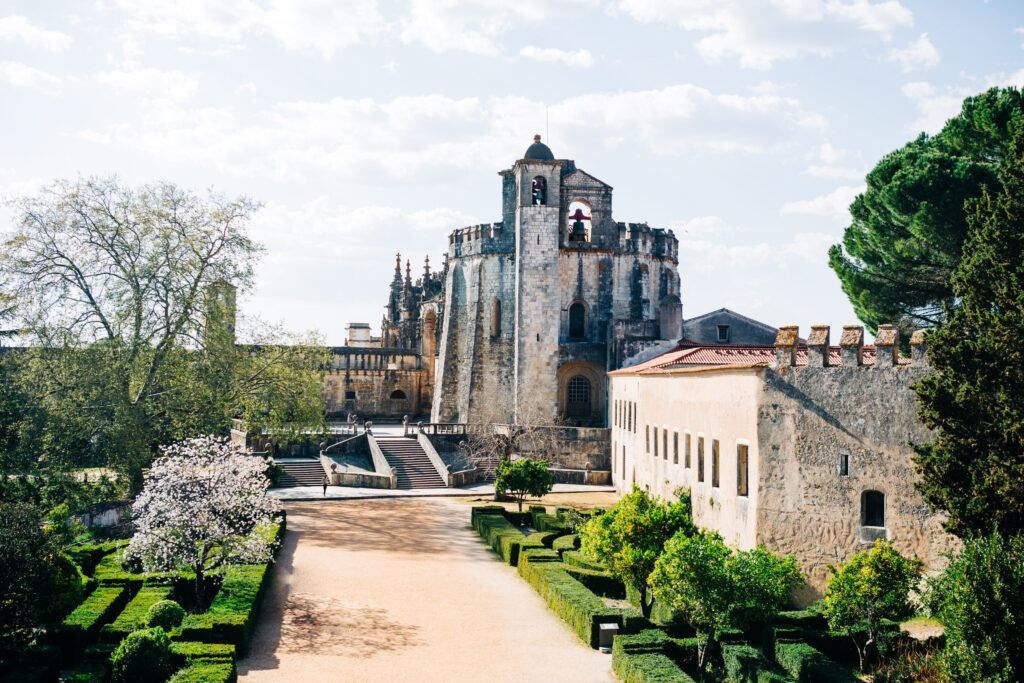
Convento de Cristo, in Tomar, is also a UNESCO World Heritage Site. Photograph by Karthika Gupta
Castelo de Marvao
The Castelo de Marvao, in Marvao in the Alentejo, is a fortress constructed by the Muslim Lord, Ibn Marwan, in the 9th century.
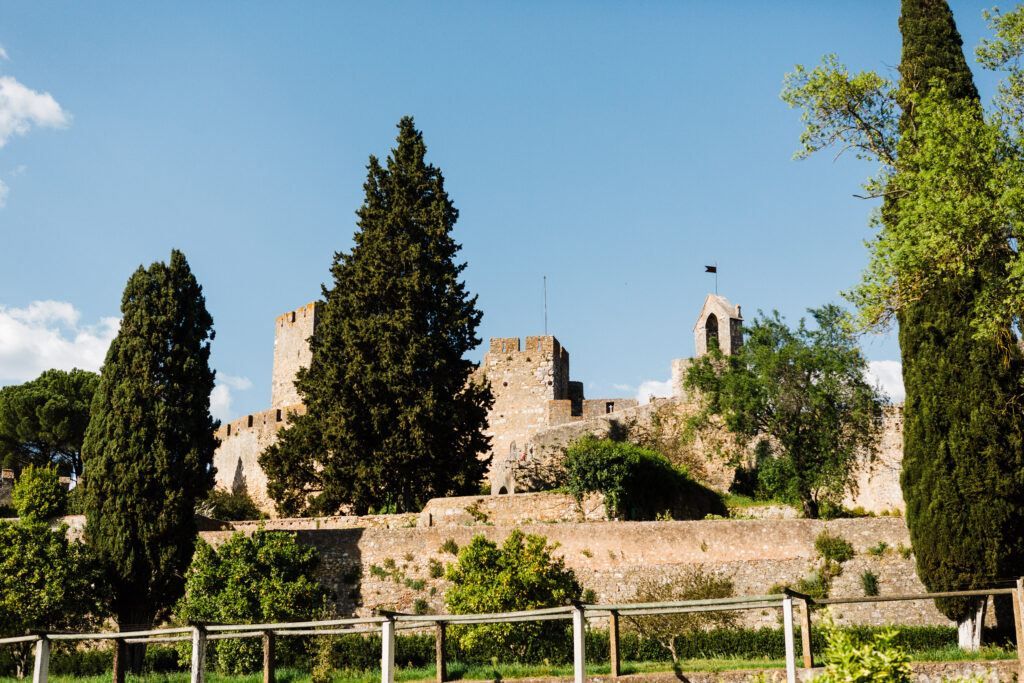
Photograph by Karthika Gupta
The castle grounds include a huge cistern to provide water in times of siege, and on a clear day, you can even see a few kilometers into the bordering country of Spain.
The town of Marvao sits within the walls of the castle and is a delight in itself.
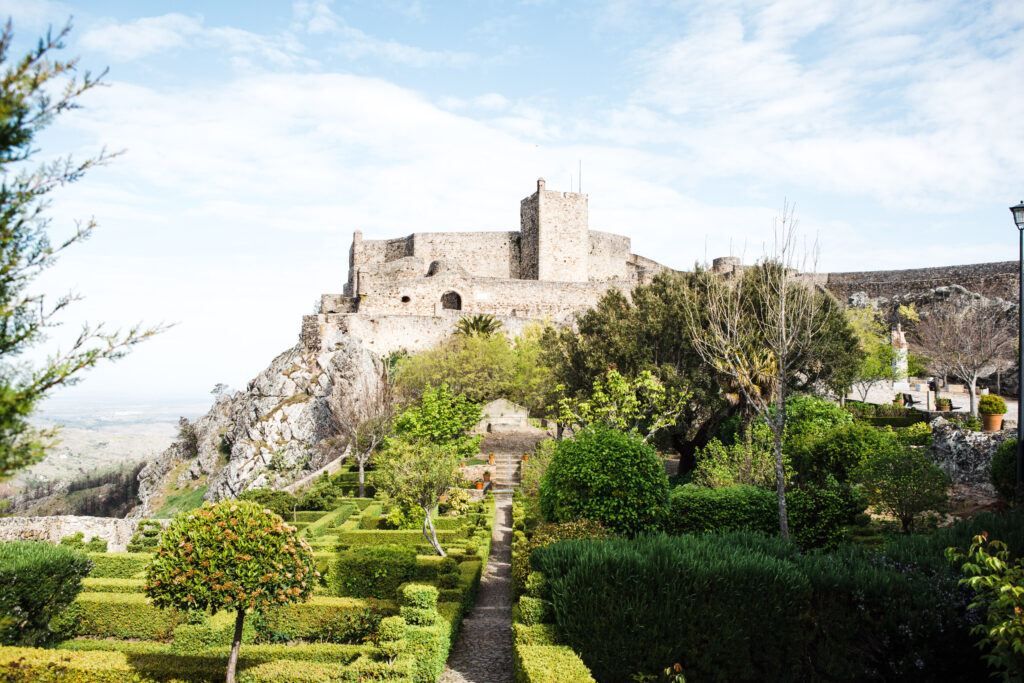
Castelo de Marvao. Photograph by Karthika Gupta
Key Lesson: When photographing castles, don’t be afraid to experiment with a different perspective. Night shots of castles that are lit up like the one in Marvao are quite spectacular.
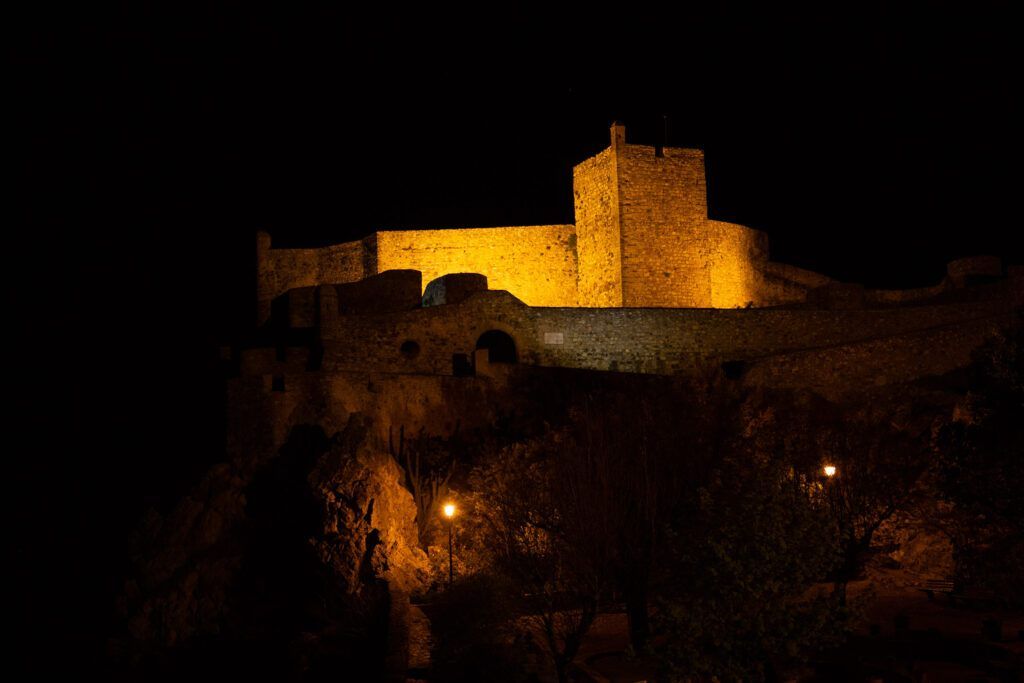
Castelo de Marvao at night. Photograph by Karthika Gupta
Key Lesson: Also remember that when photographing castles and churches, you should be respectful of their history and culture. Try to keep as silent as possible because you are in a place of worship. If you can mute the shutter on your camera, do so. And remember, never photograph someone praying. That is simply rude and unethical.
Sea and Surf
Portugal’s Algarve Region along the southern coast is best seen by car.
Perhaps even switch off the GPS and go for a drive with the smell of the sea and surf guiding you to small coastal towns.
You will pass dramatic and cliffs, turquoise blue waters, and surf-themed cafes as you drive up and down the coast.
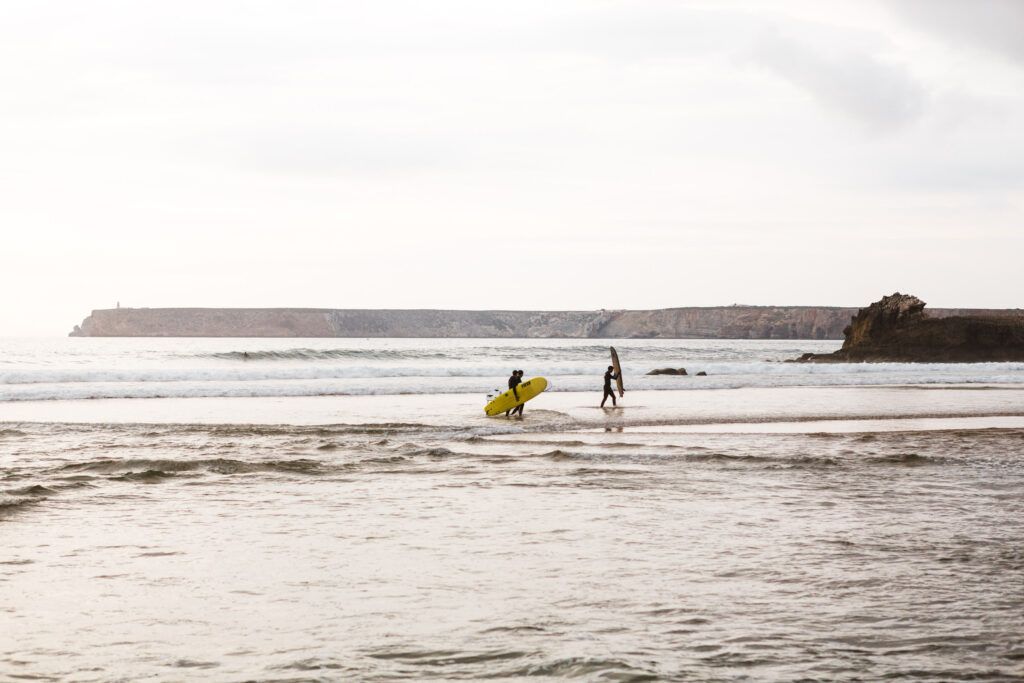
Photograph by Karthika Gupta
\Portugal’s Algarve region is the perfect place to unwind and escape. With more than 150 beaches bordering a whole string of tiny, sleepy fishing villages and historic towns, the Algarve is best seen at a slow pace to take in all the sights, sounds, and smells of the ocean.
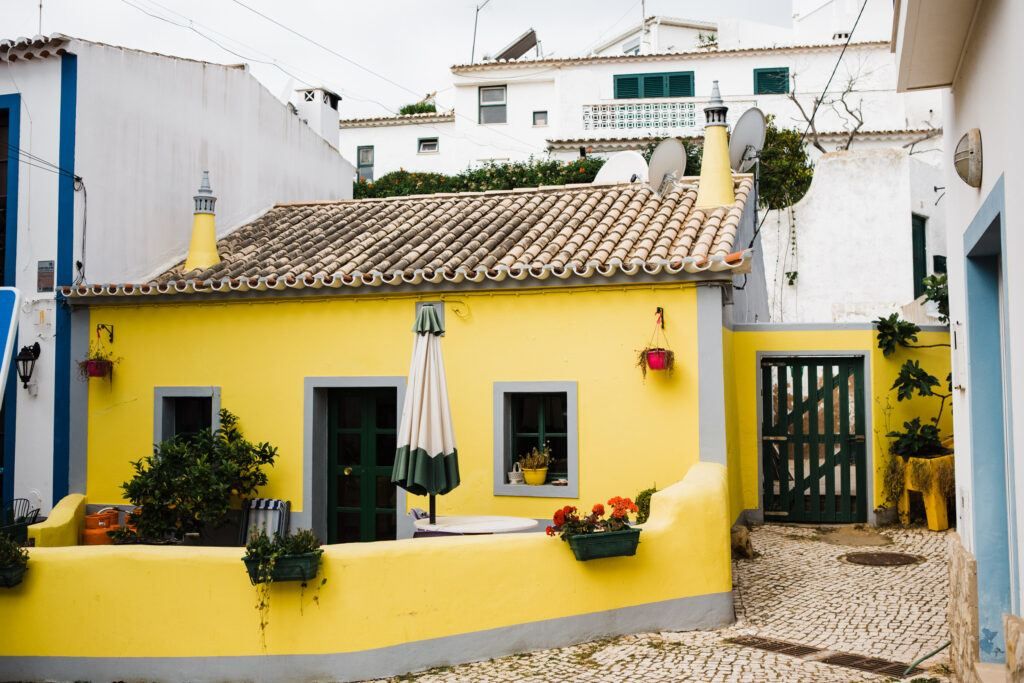
Photograph by Karthika Gupta
Small fishing villages, like Burgau, are worth a short visit to wander around the narrow paths and stumble upon tiled facades – a typical architectural feature of Portuguese houses.
Several lovely Airbnb homes are very close to the beach, so if you want a quiet place to rest, this village is it.
Photographing Faro
Faro is the biggest city in the Algarve. Faro has been the administrative capital of the Algarve since 1540.
Faro is definitely worth spending a day or two to explore its city center, historic buildings, and old churches.
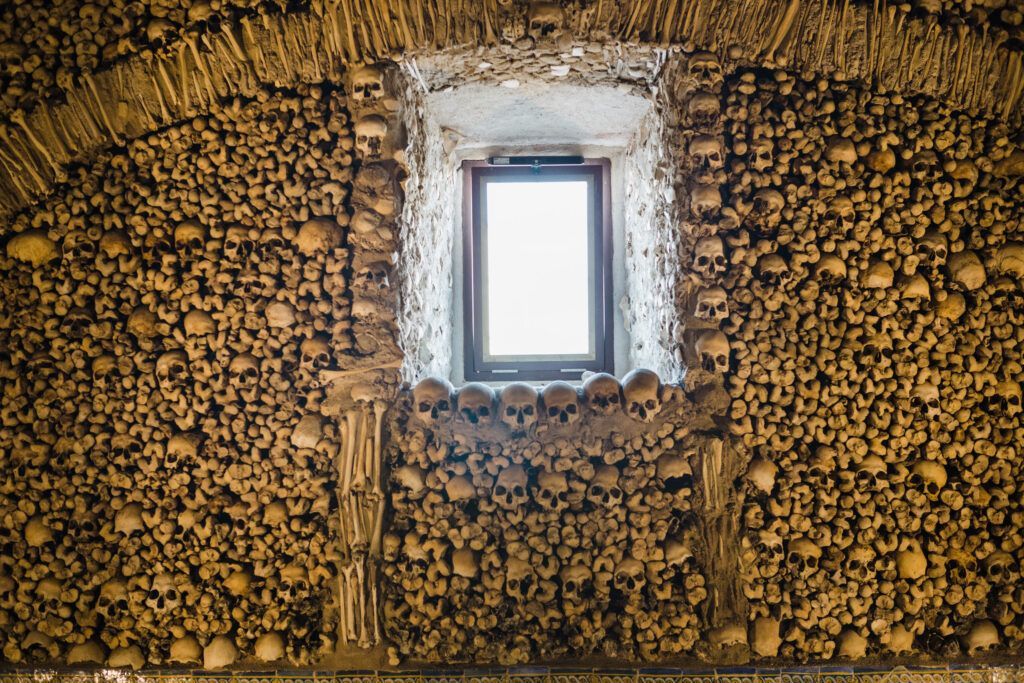
Photograph by Karthika Gupta
One of the most beautiful and famous churches of them all is the 18th century Igreja do Carmo. Right next to the church is the equally famous Capela de Ossos, a bone chapel made from the skeletons of former monks.
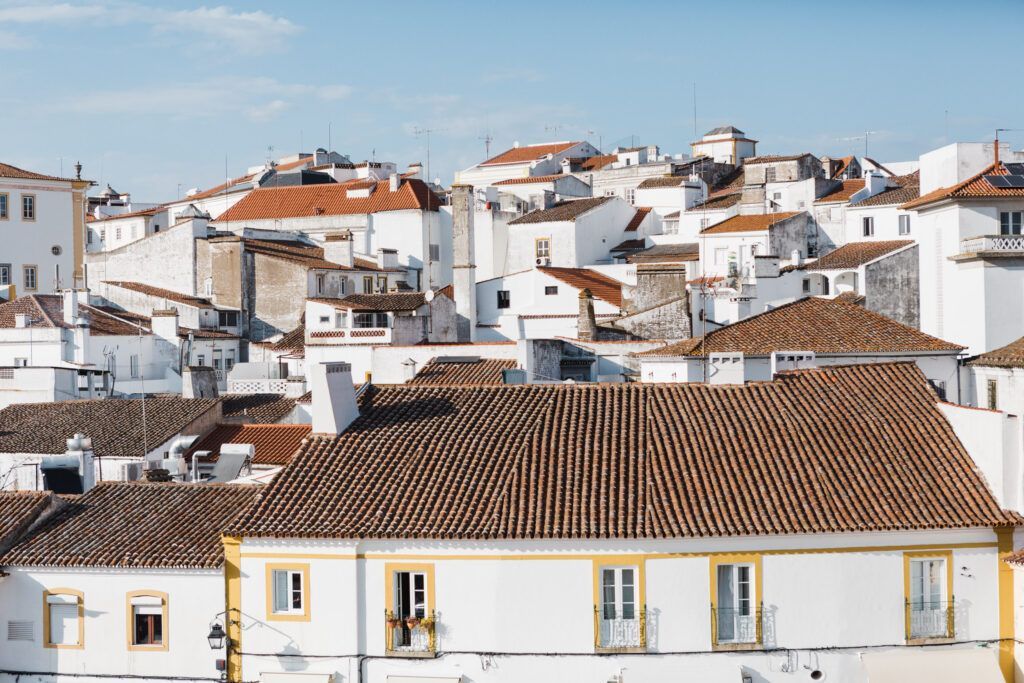
Photograph by Karthika Gupta
The chapel isn’t as gruesome as it sounds.
In fact, monks built it to humanize death. Everyone has to die one day, and death is a normal part of the journey of life.
You can even get a fantastic bird’s eye view of the city of Faro with its whitewashed walls and orange/brown tiled roofs from the terrace of the church.
Exploring the Famous Benagil Caves
Perhaps one of the most famous things to see along the Algarve coast is the Benagil caves.
Benagil cave is located next to Praia de Benagil (Benagil Beach), between Portimao, Albufeira, and Lagoa.
Perhaps one of the most famous things to see along the Algarve coast is the Benagil caves.
While it’s located just around the corner from the nearby Benagil beach (Praia de Benagil), the Benagil cave can only be reached via the sea.
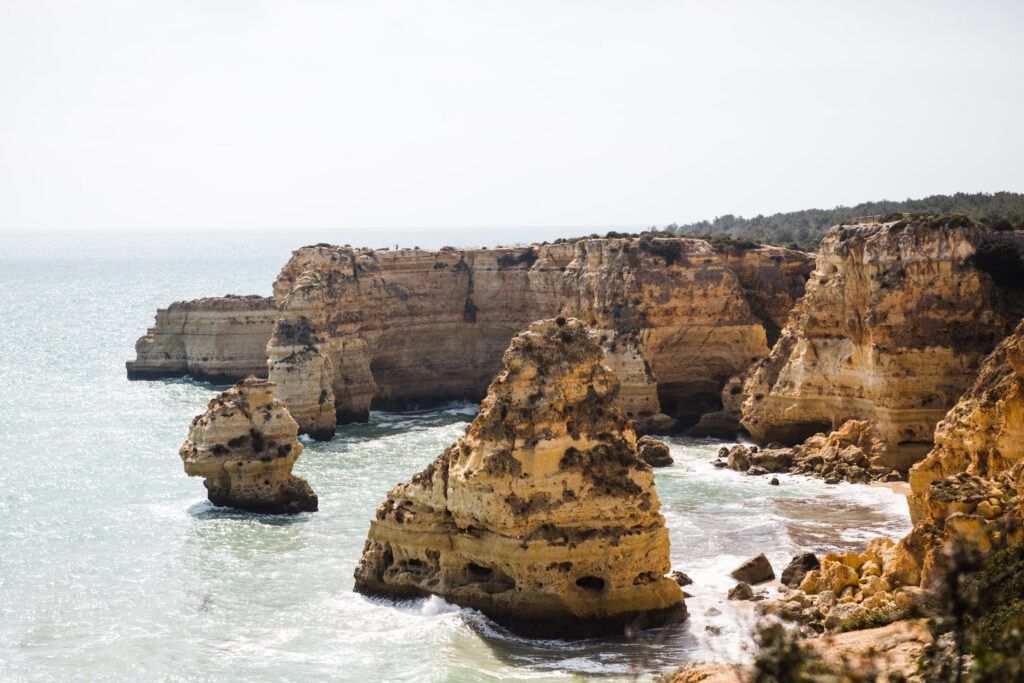
Even if you don’t manage to photograph Benagil caves, the area around the caves is full of picturesque spots like this one. Photograph by Karthika Gupta
You can drive to the top of the cave and walk up to the hole in the ceiling of the Benagil cave and see it from above, but there is no way to get inside the Benagil Cave itself on foot.
Key Lesson: To get to the Benagil cave, you have to either swim from the beach, which can be quite challenging because the ocean is very rough around these parts, or take a kayak/boat tour. Be smart about the type of gear you carry. Maybe take a smaller go-pro or even just use your cell phone to take photos inside the cave. No shot is worth getting your expensive gear wet.
Recommended Reading: Want to learn how to make your photos stand out from everyone else’s? Grab a copy of Photzy’s Effective Storytelling premium guide.
Catching ‘Surfs up’ in Sagres
Arguably, the traditional fishing village of Sagres, which is considered as the southernmost point in Europe, is most famous for its surfing.
It has a quiet atmosphere for the most part, except for the summer months when the almost perfect surf draws many tourists and locals alike.
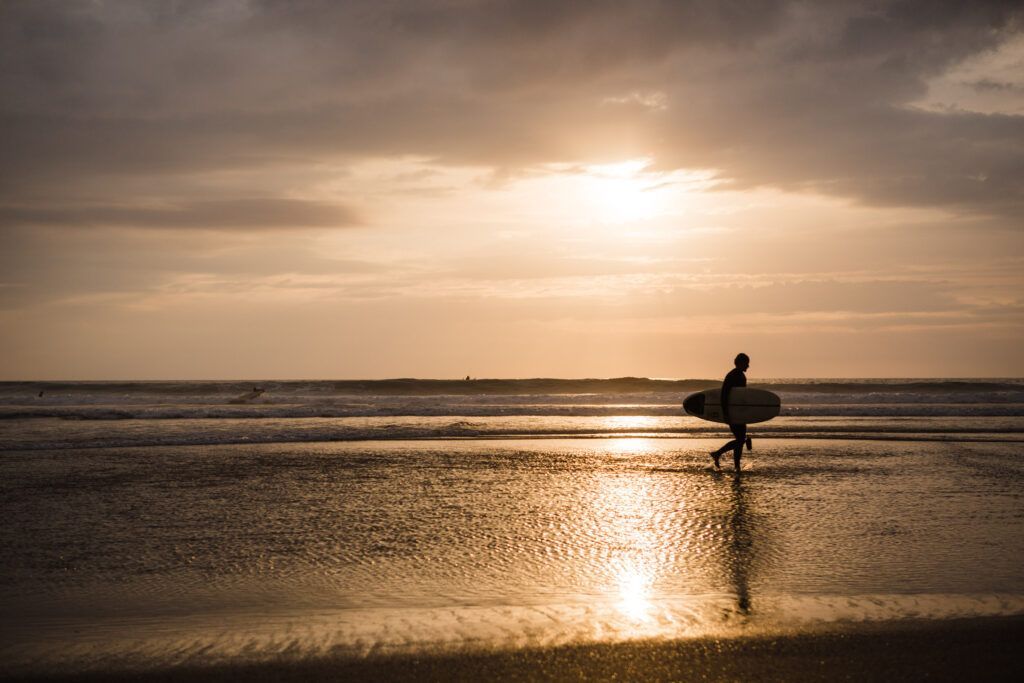
Photograph by Karthika Gupta
The waves vary from mild and medium sizes on most days, to fairly large, especially when the winter months hit.
This brings out the surfers in huge numbers and can make for some great action shots.
The landscapes around the Algarve are also breathtaking, so bring your tripod and capture some great sunset shots.
Conclusion
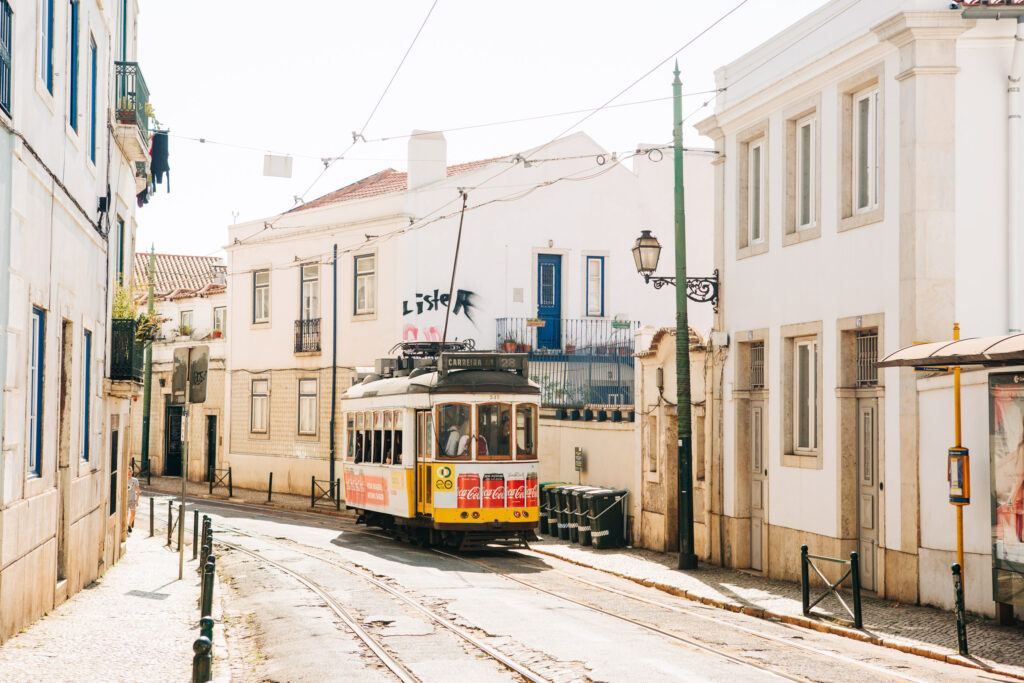
Photograph by Karthika Gupta
As you can see, Portugal is very versatile in the kind of things to see and do and hence it is a photographer’s delight, no matter what your genre of photography.
Your best bet is to make a plan to explore and photograph the country based on what interests you and what you like to explore.
At the same time, don’t be afraid to experiment.
Remember to take night shots of the city, castles, or perhaps even the markets.
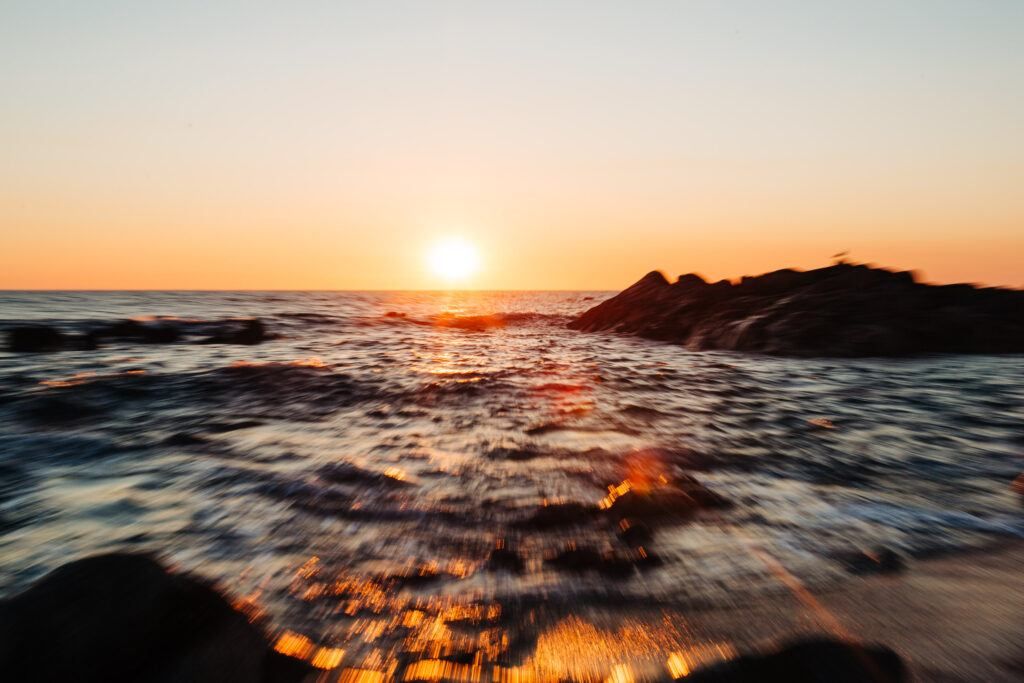
One of my favorite shots in Portugal. Experiment with panning and slow shutter speed during sunset! Photograph by Karthika Gupta
Self-Check Quiz:
- When planning a trip somewhere, what is the best way to explore the country (if time were not an issue)?
- What are the rules for photographing inside churches or monasteries?
- What are some atypical photos you can get especially in a place like Portugal?
- What is the best way to photograph Benagil caves?


